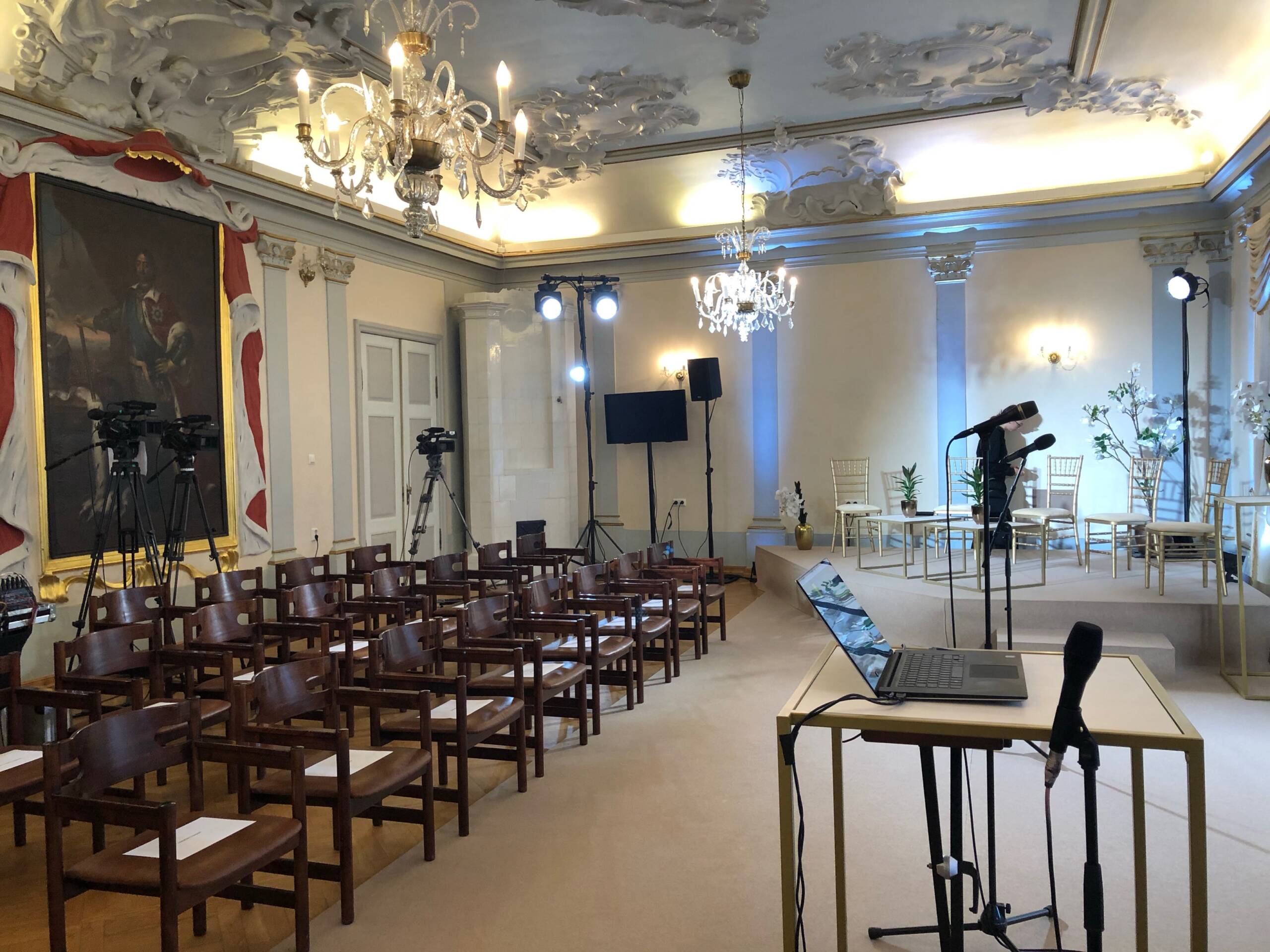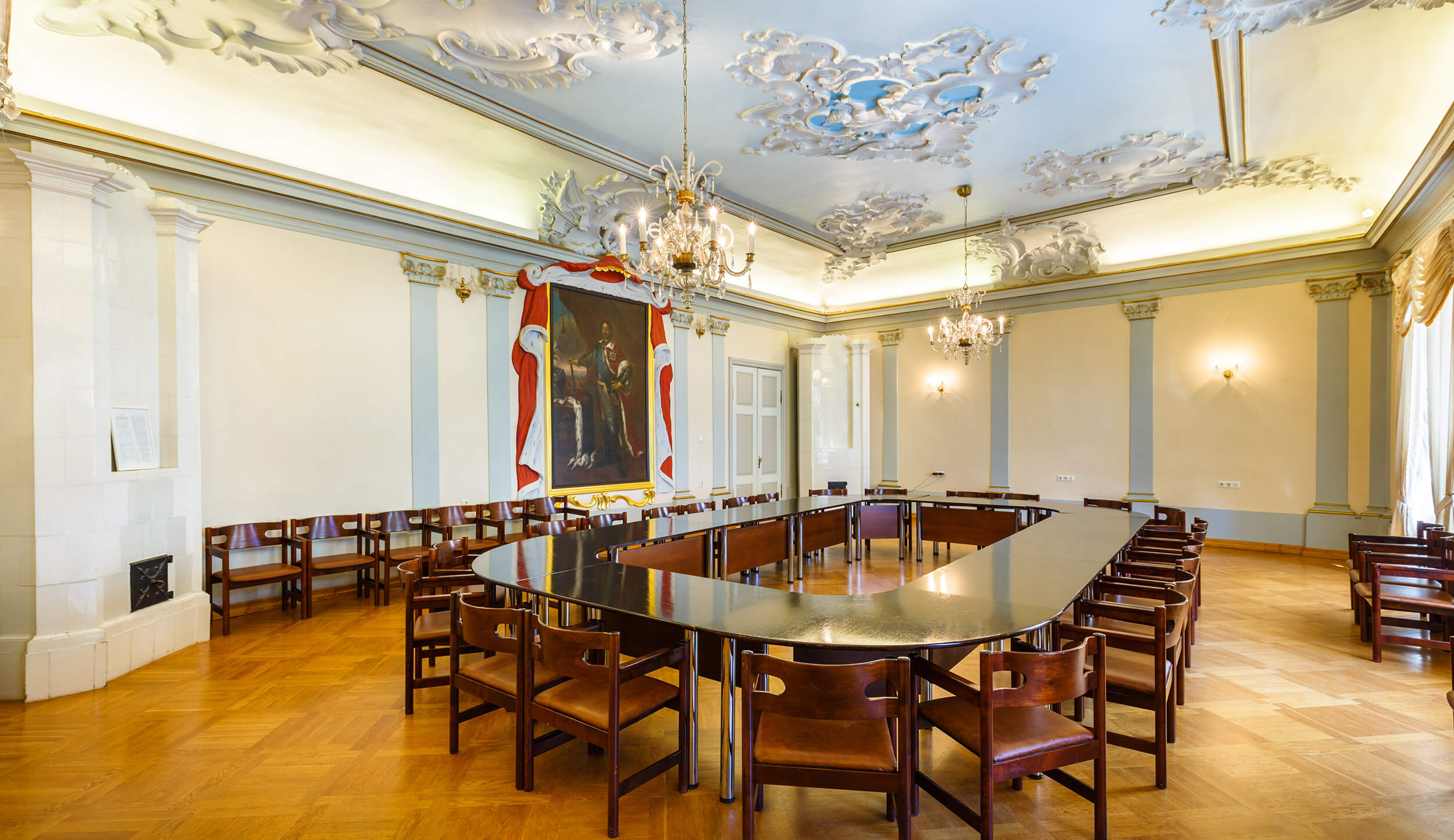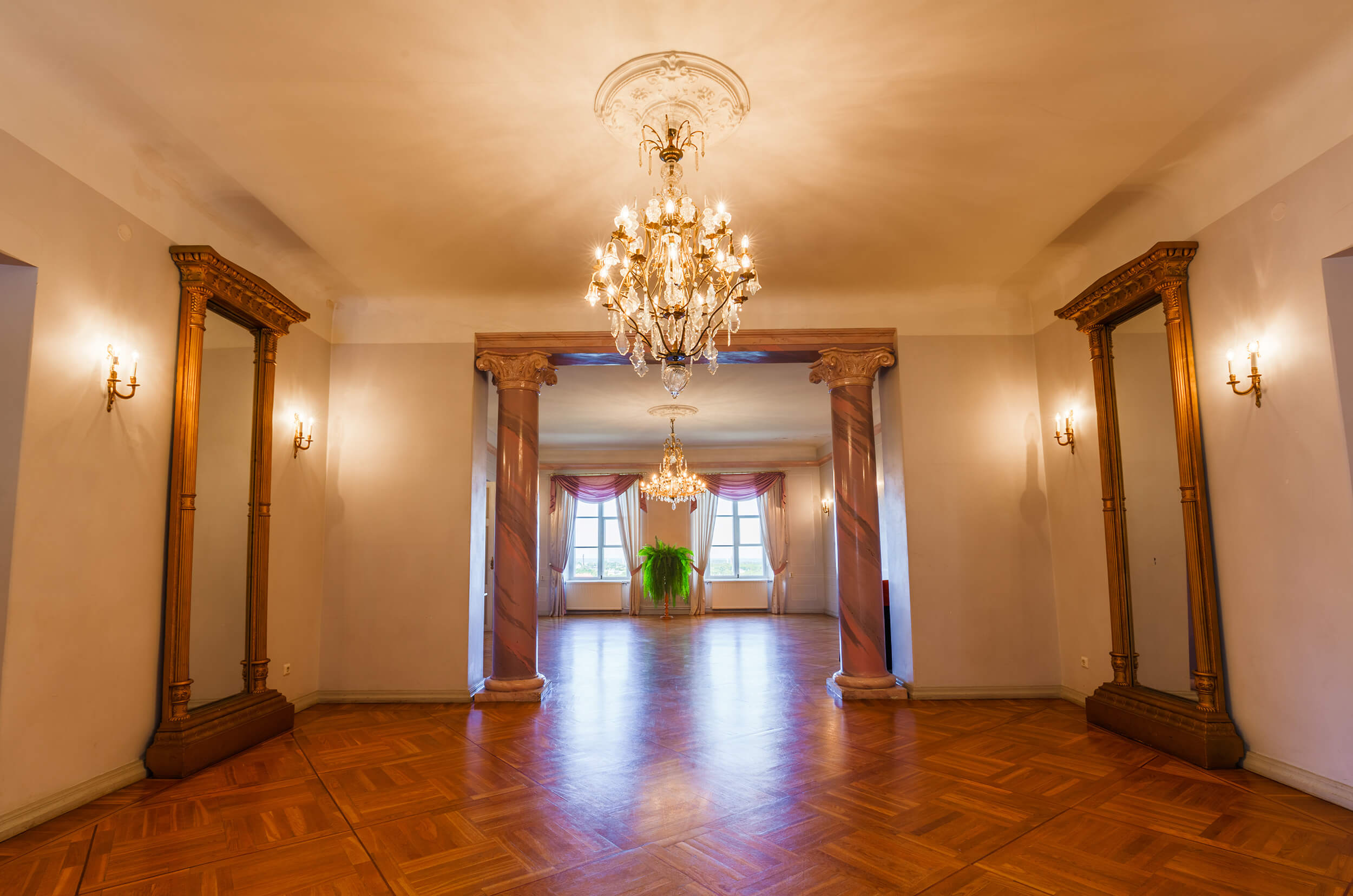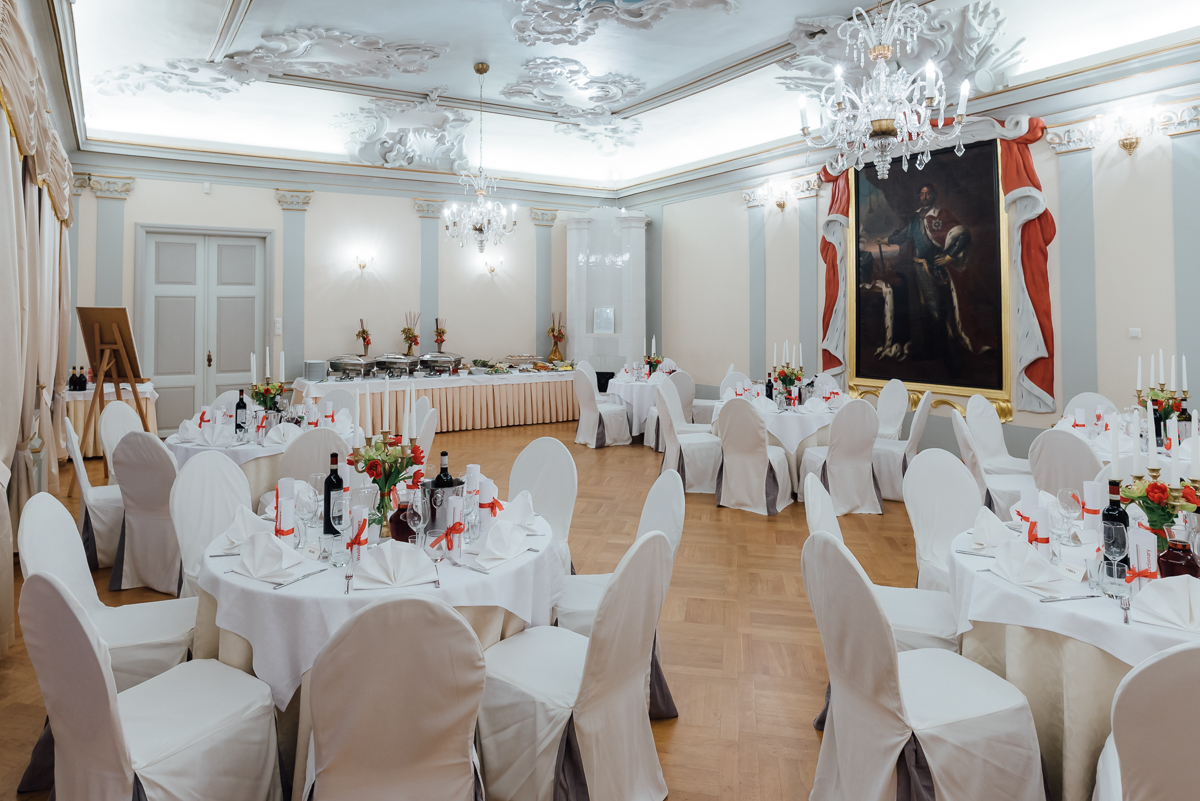History and architecture of the building
On 17 February (2 March according to the new calendar) 1917, Martin Luther, a major industrialist, called together representatives of 18 of Tallinn’s largest factories, who decided to found a Tallinn Region Factory Owners’ Association. Martin Luther was elected chairman and Konrad Mauritz secretary. The association started to operate at 12 Vana-Viru Street, the building where the Tallinn City Council is now located.
The Estonian Freethinkers’ Association (EVÜ) quickly became a very influential organisation. In different years, 40 to 60 representatives of big industry from Tallinn and elsewhere in Estonia belonged to the association. The founder of the association, Martin Luther, served as chairman of the board until 1940, when he emigrated to Germany.
From the end of 1918 onwards, the organisation began to take an active part in the industrial, labour, social, tax and foreign trade policies of the now independent Estonia. The argued position papers of the representatives of the EVÜ attracted the serious attention of the government and ministries of the then young republic, as well as of other authorities. Feeling responsible for the development of Estonia’s economy, the activities of the EARC not only influenced the development of large-scale industry here, but the association’s proposals also left their mark on the legislation and customs policy of the time.
With the disappearance of Estonian independence, the representative organisation of industrialists ceased to exist. 1940. In July 2005, the occupation authorities declared the Estonian Free Trade Association liquidated. The last meeting of the Society’s Board of Directors was held on 2 July 1940. Many of the leading figures and members of the association perished in the repressions of the Soviet authorities or disappeared, among them Konrad Mauritz. The chairman of the Association since its foundation, Martin Luther, died in Munich in 1963.
As Estonia regained its independence and moved towards a free market economy and out of the planned economy, the industrial unions formed a joint representative organisation, the Estonian Confederation of Industry (ETKL), on 29 November 1991, which began to play the role of the employers “representative in the social partnership with the government and workers” representative organisations in 1992. Viljar Veskiväli, the union’s executive director, took over the leadership, and Elmar Kruusma became chairman of the board. 4. On 1 May 1995, the ETKL was reorganised as the Confederation of Estonian Industry and Employers (ETUC). At that time, ETTK was mainly a federation of manufacturing companies, in much the same way as a union of factory owners.
On 20 November 1995, the service and trade sector unions formed the second umbrella organisation of employers in Estonia – the Confederation of Estonian Employers’ Associations (ETÜKL), with Eve Päärendson as its executive director and Priit Vilba as its chairman. At the time, employers were represented in the tripartite negotiations by two organisations – ETUC and ETUC.
1997. In September 1997 the ETUC and the ETUCL started merger talks, which ended on 29 November 1997 with the formation of a single central employers’ organisation – the Estonian Confederation of Employers and Industry (ETUC). Henn Pärn was appointed Executive Director and Jüri Käo Chairman of the Board of the Central Confederation, replacing the two previous umbrella organisations.
2001. In 2007, the members changed the name of the organisation to the Estonian Employers’ Confederation.
The Confederation of Estonian Employers has been a member of the InternationalOrganisation of Employers (IOE) since 1998. Since 2003, we have been a member of BUSINESSEUROPE (until 2007 known as the Union of Industrial and Employers’ Confederations of Europe, UNICE).
Since 2010, when Estonia joined the OECD, we have been a member of theBusiness and IndustryAdvisory Committee to the OECD (BIAC).
2010. In 2007, the Estonian Confederation of Employers signed cooperation agreements with theConfederation of Latvian Employers(LDDK) and the Confederation of Lithuanian Industries(LPK). 2011. In 2007, the Confederation signed a cooperation agreement with the Ukrainian Confederation of Employers(FRU).
2020. In the economic crisis that followed the global coronet pandemic in 2007, when a large number of sectors were facing difficulties due to state restrictions, the Confederation of Employers actively participated in the public debate and made its own recommendations to the government and the parliament on the smoothest way out of the crisis and on what support measures could be put in place.
Following the start of Russia’s large-scale aggression in Ukraine in February 2022, we have been doing our part to help integrate the war refugees who have arrived here as smoothly as possible into Estonian life and to ensure that they are treated equally and with dignity in the labour market. Together with our partners from Latvia, Lithuania and Poland, we made a joint statement to EU leaders stressing the need for continued assistance to Ukraine, the continuation of sanctions against Russia, and support for countries of destination of war refugees.
Architecture
The two-storey building with a high tiled roof at Kiriku 6 on the north-western edge of Toompea is a noble house with a unique late Baroque interior. It was built on the site of a former single-storey dwelling, which was left untouched by the fire that devastated Toompea in 1684. On the western side of the plot, a narrow outbuilding, probably a stable-barn, was already standing in the 17th century and has been preserved to this day.
The front façade of the building has a projecting tower-like part, the cross-vaulted cellars are built on natural pile and may date from the 16th-17th centuries. The layout of the rooms is baroque symmetrical and identical on both floors. Most of the wings and the 9 white fork beams date from the second half of the 19th century.
The bathrooms are located in the northern part of the house. Visitors will find 6 bronze chandeliers with crystal chandeliers, a Gustav Becker chapel bell, 2 neo-Ampire mirrors and 4 wall hangings from the early 20th century.
In the centre, on both floors, there is a ceremonial hall-vestibule, divided into two open parts by circular columns, with a parade staircase at the back. In the so-called Peter’s Hall is a large portrait of Peter I, a copy of a painting by L. Caravague from 1723, which was restored between 1976 and 1977 and again between 1996 and 1997.





